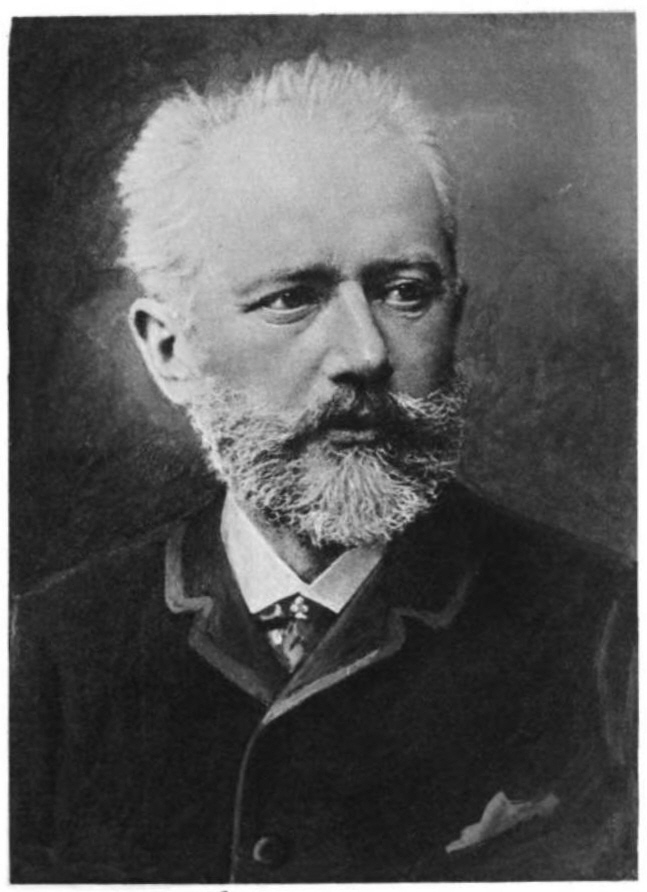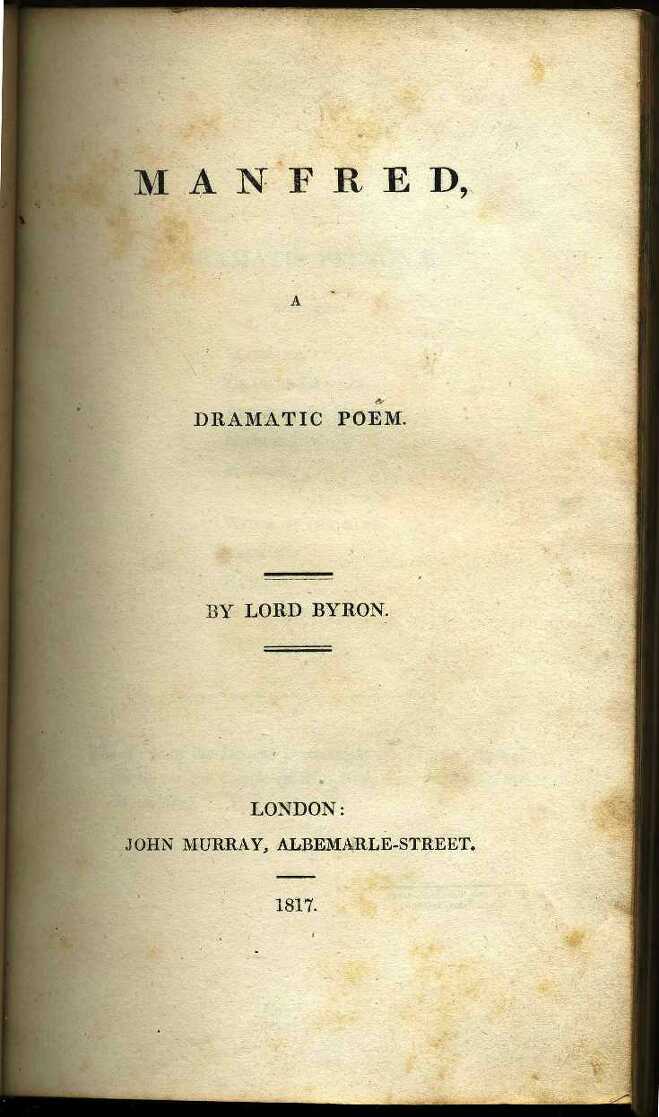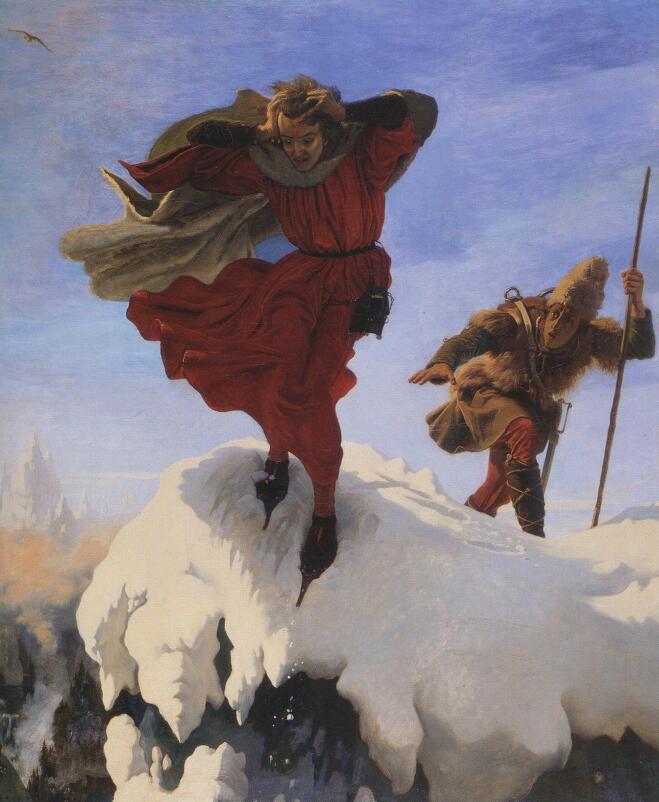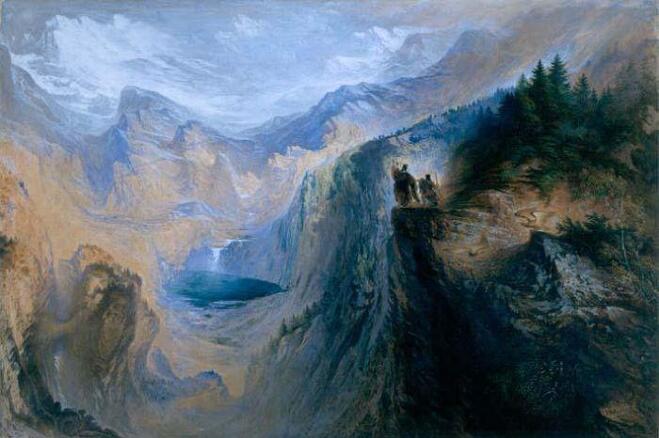Tchaikovsky

Manfred Symphony in B minor, Op 58
교향곡 ‘만프레드’〉는 차이콥스키의 대표적인 ‘표제 교향곡’ 중 하나로서, 바이런의 극시 《만프레드》에 기초한 작품이다. 바이런의 극시를 그대로 묘사하기 보다는 여러 장면을 각 악장에 담아낸 차이콥스키의 〈교향곡 ‘만프레드’〉는 그의 음악 특징이 고스란히 드러나는 대표작 중 하나이다.
표제에 대한 작곡가의 견해를 바꾼 극시
바이런의 극시 《만프레드》를 기초로 한 표제적 작품이다. 발라키레프의 권유로 작곡하였으며, 그에게 헌정하였다. 발라키레프는 원래 베를리오즈에게 작곡을 권했으나 작곡가가 노령과 병환을 이유로 거절했기 때문에 차이콥스키에게 다시 권한 것이라 한다. 차이콥스키는 표제 음악을 많이 작곡했지만, 이 음악에 대한 그의 견해는 긍정적이지 않았다. 그렇기에 발라키레프의 권유가 차이콥스키에게 반가운 것만은 아니었다. 그러나 바이런의 극시를 읽고 작품을 구상하면서 내용에 푹 빠지게 되었다. 작품 속 만프레드의 고독함과 음울함에 공감하면서 작곡에 집중하게 되었다. 처음의 회의적인 입장과 달리 에밀리아 파프로브스카야에게 쓴 편지에 따르면, 차이콥스키는 작곡과정의 어려움을 토로하면서도 “이 작품은 아마도 나의 교향곡 중 최고가 될 것 같아.”라고 말하며 작품에 대한 애정을 보였다.
만프레드의 고독함에 공감하면
발라키레프는 차이콥스키에게 작곡 권유와 함께 작곡에 대해 몇 가지 안을 제시하였지만, 차이콥스키는 본인의 스타일로 작곡하였다. 작품 역시 바이런의 극시를 그대로 묘사하기 보다는 여러 장면을 나누어 표현하였다. 극시 《만프레드》의 내용은 베른 알프스에 사는 귀족 만프레드가 그의 연인 아스타르테에게 지은 죄악으로 괴로워하는 것에서 시작한다. 그는 7개의 영혼을 소환하여 망각에 이르려고 하지만, 이를 이루지 못한다. 운명은 그의 자살도 막는다. 만프레드는 알프스의 주신 아리마네스의 궁전에 가게 되며, 그의 여인 아스타르테를 만나 용서를 빌지만 용서 받지 못한다. 결국 만프레드는 종교를 통한 죄의 구원마저 저버리며, 스스로 죽음을 선택한다. 만프레드는 수도원장에게 그의 마지막 말, “이보시오, 죽음은 그렇게 어렵지 않네.”라는 최후의 말을 남긴다.
차이콥스키의 〈만프레드〉는 아리마네스의 궁전에 가기 전에 방황하는 만프레드를 묘사한 1악장, 극시의 배경을 그린 듯이 묘사한 2, 3악장, 아리마네스의 궁전에 들어간 이후를 표현한 4악장으로 구성되어 있다.
1악장 렌토 루구브레-모데라토 콘 모토 – 안단테
알프스 산맥에서 방황하는 만프레드를 묘사하고 있다. 차이콥스키는 절망에 빠진 만프레드를 4개의 침묵으로 나누어진 5개의 장면으로 표현했다. 첫 주제는 베이스 클라리넷과 바순이 장엄한 주제를 연주한다. 곧 전체에 등장하는 만프레드 주제이다. 두 번째 주제는 저음부의 목관과 첼로가 상행하는 셋잇단음표로 질주한다. 이 부분은 차이콥스키의 작품에서 가장 큰 클라이맥스 부분이다. 세 번째는 다소 차분한 인상을 가지고 있다. 4번째 주제는 이 작품에서 중요한데, 이것은 바로 만프레드의 옛 연인 아스타르테의 주제이며 바이올린으로 연주된다. 이어 만프레드의 사랑의 고백으로 여겨지는 주제가 현으로 부드럽게 연주된다. 마지막은 흥분한 듯한 클라이맥스로 첫 주제가 변형되어 나오기도 한다. 전체적으로 긴장감이 조성되고 강렬한 인상을 준다.
2악장 스케르초: 비바체 콘 스피리토
‘알프스의 산신령’이라는 부제가 붙어 있다. 폭포가 만들어낸 무지개에서 만프레드 앞에 나타난 산신령을 묘사한 악장이다. 빠르고 활기차게 시작하는 이 스케르초는, 다채로운 음색과 텍스처로 이루어져 있다. 트리오로 들어가면서 부드럽고 우아한 주제가, 매력적인 마법의 세계를 그린 듯하다.
3악장 안단테 콘 모토
‘마을의 생활’이라는 부제가 붙어 있다. 소박하고 자유로운 산마을을 표현하였다. 목동의 피리를 연상하는 오보에와 플루트의 연주가 인상적인 악장이다. 전원풍의 음악에 격렬함과 극적 기복이 중간 중간 드러난 악장이다.
4악장 알레그로 콘 푸오코
‘지하의 아리아나 궁정’이란 부제가 붙은 악장으로 알프스의 산신 아리마네스의 지하 궁정에서의 향연을 묘사한 부분이다. 향연 중 만프레드의 등장, 아스라르테의 그림자의 출현이 묘사되어 있다. 4악장은 조성과 템포가 빈번하게 변화하며, 2개의 대조적인 모티브를 기초로 끊임없는 기복을 보여준다. 마지막에 라르고로 〈진노의 날〉이 나오고 만프레드의 죽음을 암시하며 곡을 마친다
The Manfred Symphony is a programmatic symphony composed by Pyotr Ilyich Tchaikovsky between May and September 1885; it is based on the poem "Manfred" written by Lord Byron in 1817. It is the only one of Tchaikovsky's symphonies he completed that doesn't have the opus number. The Manfred Symphony is the only programmatic symphonic work by Tchaikovsky in more than one movement; at the beginning, he considered the work one of his best, and in a typical reversal of opinion later considered destroying all but the opening movement. The symphony was greeted with mixed reviews, some finding much to laud in it, and others feeling that its programmatic aspects only weakened it.
The symphony is divided into four movements:
1. Lento lugubre. Manfred wanders in the Alps: weary of the fatal question of existence, tormented by hopeless yearnings and the memory of past crimes, he suffers cruel spiritual pangs. He has plunged into occult sciences and commands the mighty powers of darkness, but neither they nor anything in this world can give him the forgetfulness to which alone he vainly aspires. The memory of the lost Astarte, once passionately loved, tortures his heart and there is neither limit nor end to Manfred's despair. The musical embodiment of this program note is presented in five extensive musical slabs spaced out by four silences. A brooding first theme, briefly unharmonized, builds to music both spacious and monolithic. A second theme leads to a second musical slab, this time pushing forward with the loudest climax Tchaikovsky ever wrote. The music in the third slab seems calmer, while the fourth slab marks the appearance of Astarte. The fifth slab culminates in a frantic climax and a series of abrupt, final chords.
2. Vivace con spirito. The Alpine fairy appears before Manfred in the rainbow from the spray of a waterfall. Tchaikovsky's efforts in exploring fresh possibilities in scoring allowed him to present his music with new colors and more refined contrasts. In this scherzo, it seems as though the orchestration creates the music, as though Tchaikovsky has thought directly in colors and textures, making these the primary focus. Put simply, there is no tune and little definition of any harmonic base, creating a world alluring, fragile and magical. The point becomes clear when an actual and lyrical tune enters the central section of the movement.
3. Andante con moto. A picture of the bare, simple, free life of the mountain folk. This pastorale opens with a siciliana, then the three-note call of a hunter. The opening theme returns; a brief and lively peasant dance is heard, then an agitated outburst, before the opening theme returns. The opening pastoral theme eventually returns more spaciously and in a fuller, more decorative scoring. The hunter sounds his horn; the music fades.
4. Allegro con fuoco. The subterranean palace of Arimanes. Infernal orgy. Appearance of Manfred in the middle of the bacchanal. Evocation and appearance of the shade of Astarte. He is forgiven. Death of Manfred. Many critics consider the finale to be fatally flawed, but the problem lies less with music than with the program. Up to this point Tchaikovsky has done well at reconciling the extra-musical requirements for each movement with the music itself. Now, however, the program takes over, beginning with a fugue, which is by its nature academic and undramatic, to depict the horde's discovery of Manfred within their midst. The result, though in many ways becoming a condensed recapitulation of the latter half of the first movement, becomes a fragmented movement with musical disruption and non-sequiturs, ending with the Germanic chorale depicting Manfred's death scene.
'♣ 음악 감상실 ♣ > - 차이콥스키' 카테고리의 다른 글
| Tchaikovsky: Complete Works for Cello and Orchestra (0) | 2019.09.05 |
|---|---|
| Tchaikovsky - Suite No.3 in G major, Op.55 [관현악 모음곡 3번 ] (0) | 2018.03.19 |
| Tchaikovsky- Violin Concerto in D major, Op. 35 (0) | 2018.03.14 |
| Tchaikovsky: Piano Trio in A Minor, Op. 50 ["In Memory of a Great Artist" ] (0) | 2018.03.08 |
| Tchaikovsky - String Sextet In D Minor 'Souvenir de Florence'[‘플로렌스의 추억’] (0) | 2018.03.07 |


